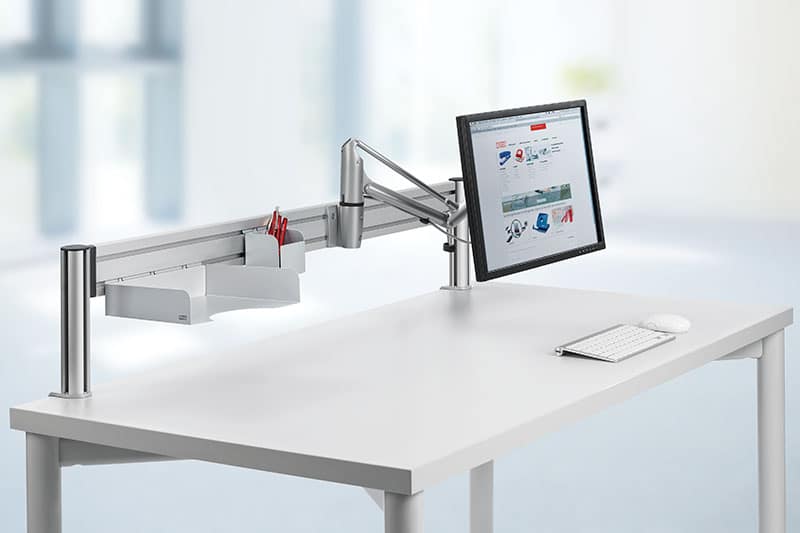Deloitte’s The Edge, Amsterdam pictured above (Photo: GRESB)
Make any office better with these sustainability and wellness features:
Low Carbon Transport Infrastructure

Bike Part Manufacturer SRAM’s office features tons of bike storage throughout the office (Photography: Michelle Litvin)
The transportation sector accounts for nearly 30 percent of all U.S. emissions. Bike Portland provides a great infographic that illustrates just how much biking can save on CO2 emissions.
Low carbon transportation means public transit or walking, running and biking. To make this possible, the inclusion of indoor and secure bike storage, as well as shower units is extremely valuable.
This added physical activity can also help boost employee productivity and also has a positive impact in terms of reducing harmful emissions. Further, regular physical activity can reduce the symptoms of depression and anxiety. It also boosts perceptions of happiness and satisfaction.
Green Products

Products like TacTiles from Interface are more sustainable than traditional carpeting and have virtually zero VOCs (Image: Interface)
Specifying the right materials and equipment for a project reduces adverse environmental and health related impacts. Certifications like the WELL Building Standard and LEED provide guidance on certain products. These certifications look at various aspects of office materials, including VOC off-gassing. VOCs or Volatile Organic Compounds are toxic substances that slowly break down and release into the air. They can cause harmful effects both short and long term. Considering how much time we spend in the office this is something that should be seriously considered.
Some certifications take sustainability in design further, looking at the life-cycle impact of products. Organizations like the Cradle to Cradle Products Innovation Institute list products that have met their rigorous criteria – including furniture and office products.
For office electronic devices that are energy efficient, EnergyStar lists certified products that include office equipment and lighting.
Natural Lighting

Dream’s Scotia Plaza office employs maximized natural lighting by removing corner offices (Photography: Steve Tsai)
Access to natural light has a tremendous effect on our wellbeing. Natural light dictates our sleep patterns. This is based on years of evolution with a natural light and darkness cycle. In their paper published in Current Biology, Wright et al find that electric lighting and reduced exposure to sunlight delays circadian timing in humans. Delayed circadian rhythms can make it harder to sleep by disrupting a person’s sleep clock. Harvard research has shown that the average worker loses 11 days of productivity each year due to insomnia.
It’s no wonder that offices around the world are taking note of this. For example, Dream office REIT’s office recently renovated their space to remove corner offices (22 of them per floor) and replace with open areas that let light shine throughout the floorplan. Natural light also reduces the amount that you have to rely on artificial lighting, reducing electricity use and GHG emissions.
Going Paperless

CBRE went paperless and saved space while not reducing usable desk area (Image: CBRE)
The average U.S. office worker uses 10,000 sheets of copy paper each year. That equates to 4 million tonnes of copy paper used annually.
As the world moves towards digitization of materials, offices are slowly following. Some firms like CBRE have implemented paperless policies. Going paperless allowed them to reduce paper storage requirements, creating valuable real estate cost savings. CBRE was able to move employees into workspaces that were smaller in size but still provided employees with the same desk area due to reduced paper clutter.


